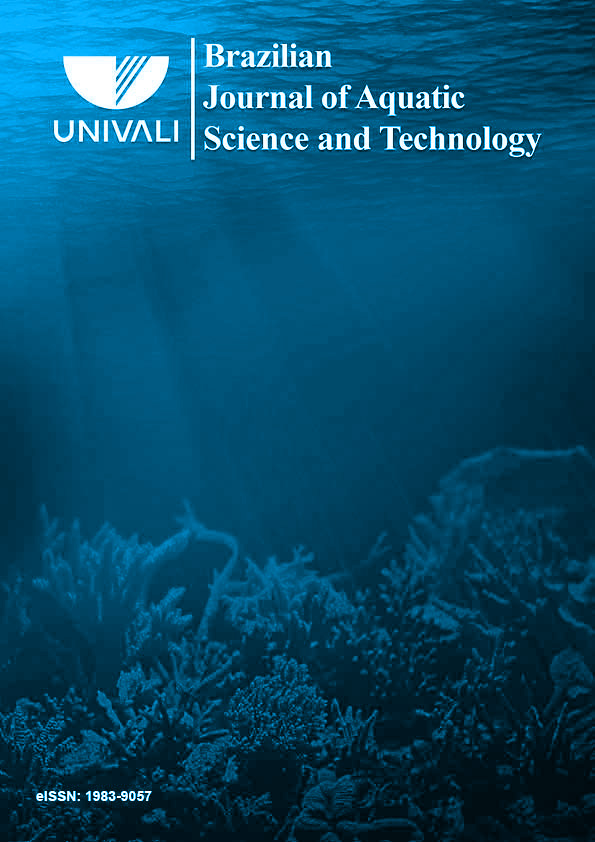SEEDLING AND GROWTH OF Rhizophora mangle L. PROPAGULES AT A RESTORATION SITE (APA DE GUAPI-MIRIM - RJ)
DOI:
https://doi.org/10.14210/bjast.v27n1.17187Abstract
One of the biggest mangrove forests in Rio de Janeiro is located at Guanabara Bay. However, a large part of this ecosystem is currently suppressed and only 1/3 of the original 261.90 km² of mangrove vegetation can be observed. Thus, several conservation and management actions are conducted in this ecosystem. Studying plantations and other restoration strategies for this biome is important to understand the dynamics of this ecosystem and enhance such strategies. Size can be one of the most important characteristics for propagules success. Some studies state that larger seedlings can resist more and have greater survival than smaller seedlings. Therefore, this study aims to analyze the germination and development of Rhizophora mangle L. propagules at an in situ plantation in the mangroves of the Guapi-Mirim Environmental Protection Area. A total of nine plots were delimited with spacing of 4 meters by 1 meter each in which Rhizophora mangle propagules were separated into small and large groups and planted. Their germination and development were subsequently monitored for a period of 6 months. The diameter, height and initial weight of the propagules and the increase in height and diameter at 76, 93 and 154 days after planting were measured. Periodic observations were made approximately every 20 days in order to quantify the rate and type of mortality (predation, water current carriage and drying) and to monitor time (in days) of pairs of leaves opening. There were no differences between the propagules according to the size for the opening time of leaf pairs, nor for the mortality rate. The increments in diameter and height were larger for the small propagules in the first development periods, but not in the last ones. The large and small propagules did not show significant differences in diameter or height at 154 days. There was high mortality of small propagules due to predation and/or water current carriage, while the mortality for large propagules was higher due to desiccation. The results generally suggest there is no difference in the survival and development of the propagules related to size, as they are more affected by local ecological conditions.
Downloads
Published
Issue
Section
License
Authors who publish with this journal agree to the following terms:
1. Authors retain copyright and grant the journal right of first publication with the work simultaneously licensed under a Creative Commons Attribution License that allows others to share the work with an acknowledgement of the work's authorship and initial publication in this journal.
2. Authors are able to enter into separate, additional contractual arrangements for the non-exclusive distribution of the journal's published version of the work (e.g., post it to an institutional repository or publish it in a book), with an acknowledgement of its initial publication in this journal.
3. Authors are permitted and encouraged to post their work online (e.g., in institutional repositories or on their website) prior to and during the submission process, as it can lead to productive exchanges, as well as earlier and greater citation of published work (See The Effect of Open Access).

